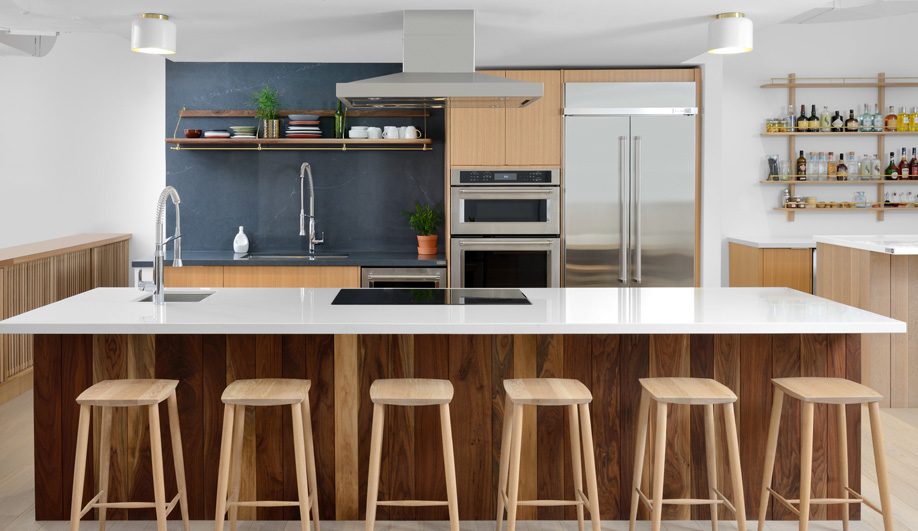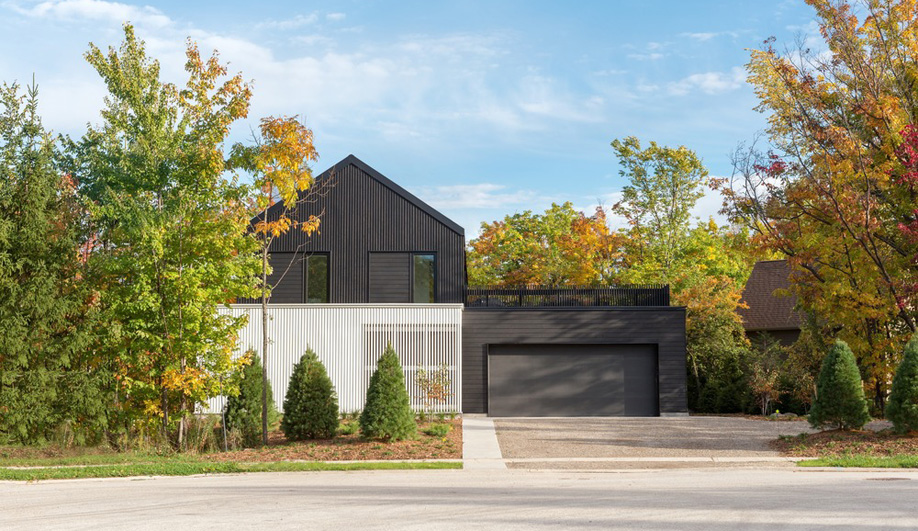
Studio Junction’s test kitchen for famed chef Grant van Gameren is a backdrop for ingenuity.
Grant van Gameren’s company, Overbudget Inc., is a culinary juggernaut with six hit bars and restaurants across Toronto and more on the way. But when he approached local firm Studio Junction to conceive a test kitchen for Overbudget’s HQ, he was looking for something completely unlike the typical restaurant set-up. “We wanted something light and airy—a space that you could feel really good in,” van Gameren says.
The 68-square-metre kitchen needed enough flexibility to allow the team to hold meetings, work on new recipes, train employees and host events ranging from intimate dinners to launch parties for up to 200, all with equal finesse. “A test kitchen is a different animal,” explains Christine Ho Ping Kong, Studio Junction’s co-founder. “It has to be able to feel intimate, and then it also has to feel expansive.”
The room’s versatility doesn’t end with its functionality; a key parameter for the design was that it serve as a backdrop for creativity. “We host many different brands, and they all have their own style,” van Gameren says. “Keeping the space bright and minimal means anyone can put their personal touch on it.” The final look draws from Scandinavia and Japan for an ambiguous minimalism that can be restyled with just a few simple changes.
Studio Junction personally manufactured several bespoke elements, including the intricate millwork. Elsewhere, it conveyed the core moves van Gameren needed to make, but left him to execute them as he wished. For instance, the firm advised that the back wall, a focal point visible from every angle in the room, should be finished with dark surfacing; illuminated by a skylight overhead, the dark wall looks especially striking and has enough gravity to balance the visual noise of the bar.
“Grant could’ve used black metal or paint there,” says Ho Ping Kong. Ultimately, he opted for a Silestone slab in Charcoal Soapstone—a counterpoint to the Dekton glacier-white countertops. Despite all the hard surfacing, the aesthetic is not at all rigid. “There’s a fluidity to the space,” Ho Ping Kong explains. “The core items are very timeless, but as soon as you start changing up the accessories, it looks completely different.”

